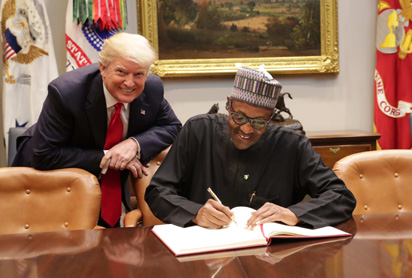Vladimir Putin has announced that Russia has developed and is testing a new line of strategic, nuclear-capable weapons that would be able to outmanoeuvre US defences, suggesting a new arms race between Moscow and the west.
Speaking in a nationally televised address to the country’s political elite weeks before a presidential election, the president showed video and animations of ICBMs, nuclear-powered cruise missiles, underwater drones and other weapons that he said Russia had developed as a result of the US pulling out of the 1972 anti-ballistic missile treaty signed with the Soviet Union.
“You didn’t listen to our country then,” Putin said during the speech on Thursday. “Listen to us now.” Some of the weapons were already being tested, he added.
The existence of several of the weapons systems, like the RS-28 Sarmat or Satan 2, nuclear missile, were well-known and their tests had been previously reported. What was new was Putin’s portrayal of Russia’s modernising arsenal as an adversarial response to US policy since 2001.
The speech came in the same month that the Pentagon released a new nuclear arms policy, which followed on from a promise by the US president, Donald Trump, to develop an arsenal “so strong and powerful that it will deter any acts of aggression”. The policy envisioned low-yield nuclear weapons on submarine-launched ballistic missiles that could match similar Russian weapons.
Putin issued a message of defiance. “I would like to tell those who have been trying to escalate the arms race for the past 15 years, to gain unilateral advantages over Russia, and to impose restrictions and sanctions … The attempt at curbing Russia has failed,” he said.
His remarks came during a state of the union speech heavy with economic promises for the Russian people and sabre-rattling against the US. It was widely viewed as his first campaign speech for Russia’s presidential elections on 18 March. The Kremlin is primarily concerned with boosting turnout as Putin is expected to cruise to a fourth term as president.
There were signs that the authorities wanted to attract extra attention to the speech by moving it from the gilded St George’s Hall at the Kremlin to an exhibition space in central Moscow where video and infographics could be shown.
The first hour of the speech was conventional, if optimistic. Putin promised to raise life expectancy by 10 years, increase Russia’s GDP by 50% by 2025 and halve the poverty rate. He said Russia would have to latch on to a wave of technological advances or risk “drowning in that wave”.
The interactive presentation began with graphs showing birth rates and harvest totals in recent years, but it was mainly used as a platform to show off Russia’s latest weaponry, some of it capable of delivering a nuclear strike anywhere in the world.
Putin highlighted a test of Russia’s RS-28 Sarmat missile. According to state media, the ICBM is able to fly 6,800 miles with a payload of 15 warheads, though the actual capabilities of the missile have not been shown. The Russian defence ministry said it had conducted a successful test launch in October, during which the missile had travelled 3,600 miles before hitting a target area in Russia’s far east.
Putin also said Russia had developed a working laser weapon, a hypersonic missile and a cruise missile powered by a nuclear reactor that could fly indefinitely.
He said the plane-launched hypersonic missile, called Kinzhal or dagger, could manoeuvre while traveling at more than 10 times the speed of sound, making it “guaranteed to overcome all existing and I think prospective anti-missile systems” and deliver a nuclear strike. Putin claimed it had completed testing and was already in use.
He also spoke about the RS-26 ballistic missile, Avangard, which Putin said “heads towards its target like a meteorite”. The missile has already raised concerns in the US about its compliance with global arms treaties.
Putin also showed several animated videos of prototype weapons, including a nuclear-powered cruise missile that could theoretically have a limitless range. He showed it navigating anti-air defences in the Atlantic Ocean before skirting the coast around South America and heading for the California coastline before the video faded to black.
After each demonstration, the crowd applauded.
Russia has been aggressively marketing its latest military tech. Its first stealth fighter, the Su-57, was deployed to Syria forcombat testing last week. Analysts said the jet’s capabilities were still not clear, and said that the deployment could be designed to show the Su-57 programme was moving forward despite time and cost overruns.
In a nod to public opinion, Putin announced an online contest to name Russia’s new cruise missile and underwater drone.
Putin has given the constitutionally mandated speech on “the situation in the country” 14 times since he first became president in 2000. He did not do so during the four years he was prime minister.
His address, which generally lasts around an hour, is given to an audience of lawmakers from the state Duma and federation council, judges, ministers and other members of the political establishment, and generally focuses on domestic issues such as the economy and corruption.






